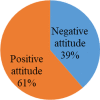Sexual reproductive health service utilization and associated factors among undergraduate students of Addis Ababa University in Ethiopia
- PMID: 36932425
- PMCID: PMC10022299
- DOI: 10.1186/s41043-023-00363-9
Sexual reproductive health service utilization and associated factors among undergraduate students of Addis Ababa University in Ethiopia
Retraction in
-
Retraction Note: Sexual reproductive health service utilization and associated factors among undergraduate students of Addis Ababa University in Ethiopia.J Health Popul Nutr. 2023 May 22;42(1):44. doi: 10.1186/s41043-023-00388-0. J Health Popul Nutr. 2023. PMID: 37218003 Free PMC article. No abstract available.
Abstract
Background: Making clinical services attractive to the younger generation has remained a challenge. Students in higher education continue to underutilize sexual and reproductive health services. This group is exposed to a very hostile environment and has a highly mobile and unprotected lifestyle, often resulting in an early sexual debut, physical and drug abuse, and sexually transmitted infections.
Objective: The aim of this study was to assess sexual reproductive health services and associated factors among undergraduate students of Addis Ababa University 2022.
Method: An Institution-based cross-sectional study was been conducted among 419 randomly selected students and data were collected by using semi-structured and pre-tested questionnaire. Data were entered to Epi info data 7.0 and exported to SPSS version 21.0 for further analysis. Both binary and multiple logistic regression analysis was used to identify factors at P < 0.05 with 95% CI and AOR.
Results: When queried, all 419 youths agreed to participate in the study, for a response rate of 100%. The mean age of the respondents was 22 years. The majority of respondents (371, 88.5%) were between the ages of 19 and 24, and 221 (52.7%) were female. More than half of those polled (273, or 65.2%) were third-year students, while 59, or 14.1%, were first-year students. About 206 (49.2%) of participants lived with their father and mother, but 138 (32.9%) had never discussed sexual and reproductive health. Finally, 205 respondents (or 48.9%) had ever used the Sexual and Reproductive Health Services. College of business (AOR (95% CI) 3.546 (1.62-7.79), respondents who live with only their mother (AOR (95% CI) 9.37 (2.78-31.51) and who live alone (AOR (95% CI) 5.75 (2.40-13.79), positive attitude toward SRHS (AOR (95% CI) 3.15 (1.71-5.80), good knowledge (AOR (95% CI) 4.16 (2.27-7.64), frequency of discussing SRHS(AOR (95% CI) 1.93 (1.12-3.346), Convenient location of youth RHs (AOR (95% CI) 8.31 (1.61-42.93), Fee of RH services (AOR (95% CI) 12.34 (6.48-23.49) and Satisfied to received RH services (AOR (95% CI) 4.59 (2.54-8.33) were independent predictors of utilized SRHS among undergraduate students.
Conclusion and recommendation: The prevalence of utilization of sexual and reproductive health services was determined to be low in this study, with identified factors increasing the likelihood of utilization being attitude, knowledge, satisfaction, discussion, fee for RH services, and location, in that order. On the other hand, poor knowledge and a negative attitude toward SRHS posed risks that contributed to reproductive health issues, so we worked on advocating for services that were available in a nearby location and raising awareness. Therefore, policymakers and health planners would be better off strengthening the urgent need to ensure adequate SRHS, knowledge, and attitude building among undergraduate students in higher education in Ethiopia.
Keywords: SRH service; Sexual reproductive health service utilization.
© 2023. The Author(s).
Conflict of interest statement
Authors declared that they have no competing interest.
Figures




References
-
- Blum RW. Risk and protective factors affecting adolescent reproductive health in developing countries. Geneva: World Health Organization; 2005. pp. 155–157.
-
- Akman O, Raol YH, Auvin S, Cortez MA, Kubova H, de Curtis M, et al. Methodologic recommendations and possible interpretations of video-EEG recordings in immature rodents used as experimental controls: a TASK1-WG2 report of the ILAE/AES Joint Translational Task Force. Epilepsia Open. 2018;3(4):437–459. doi: 10.1002/epi4.12262. - DOI - PMC - PubMed
Publication types
MeSH terms
LinkOut - more resources
Full Text Sources

